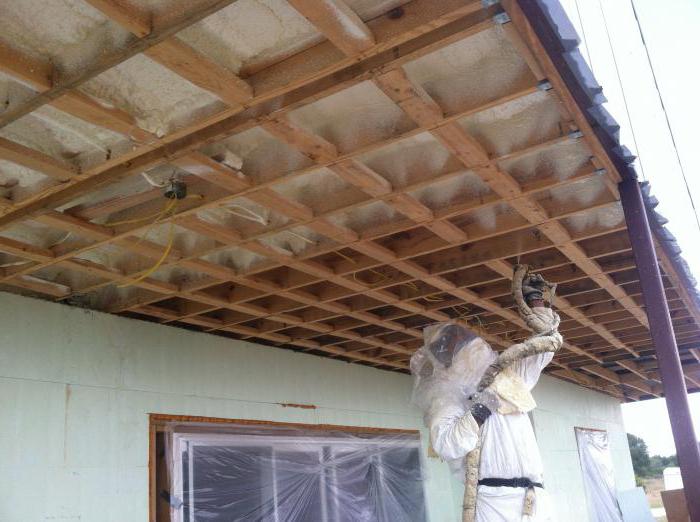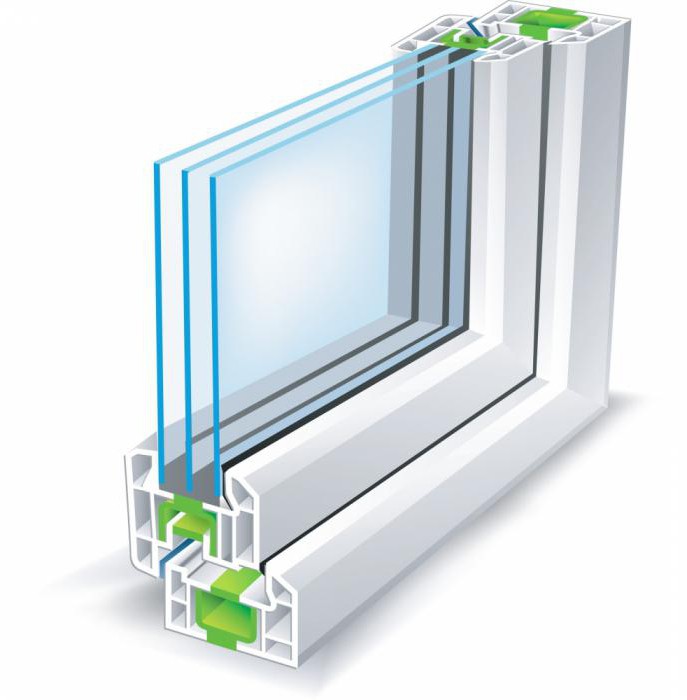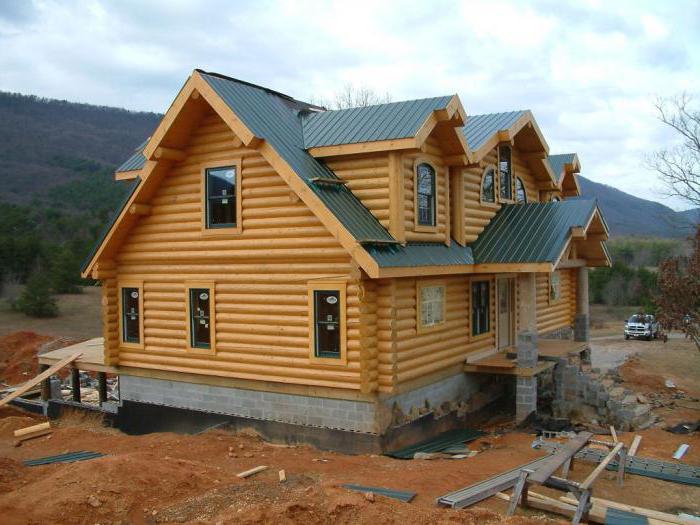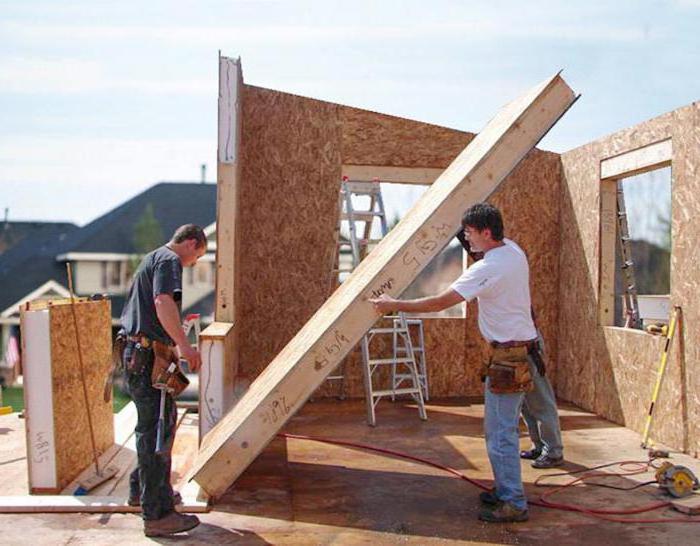When constructing private and apartment buildings, many factors have to be taken into account and a large number of norms and standards have to be observed. In addition, a house plan is created before construction, calculations are carried out on the load on the supporting structures (foundation, walls, floors), communications and heat resistance. Calculation of heat transfer resistance is no less important than the rest. It not only depends on how warm the house will be, and, as a result, energy savings, but also the strength and reliability of the structure. After all, walls and other elements can freeze it. Freezing and thawing cycles destroy building material and lead to dilapidation and breakdown of buildings.
Thermal conductivity
Any material is able to conduct heat. This process is carried out due to the movement of particles, which transmit the temperature change. The closer they are to each other, the faster the heat transfer process. Thus, denser materials and substances cool or heat much faster. It is density that primarily determines the intensity of heat transfer. It is expressed numerically through the coefficient of thermal conductivity. It is indicated by the symbol λ and is measured in W / (m * ° C). The higher this coefficient, the higher the thermal conductivity of the material. The inverse of the thermal conductivity is thermal resistance. It is measured in (m2 * ° C) / W and is indicated by the letter R.
Application of concepts in construction
In order to determine the thermal insulation properties of a building material, use the coefficient of resistance to heat transfer. Its value for various materials is given in almost all building directories.
Since most modern buildings have a multilayer wall structure, consisting of several layers of various materials (external plaster, insulation, wall, internal plaster), a concept such as reduced heat transfer resistance is introduced. It is calculated in the same way, but in the calculations we take a homogeneous analog of a multilayer wall, which transmits the same amount of heat for a certain time and at the same temperature difference indoors and outdoors.

The reduced resistance is calculated not for 1 sq. M., But for the entire structure or some part of it. It summarizes the thermal conductivity of all wall materials.
Thermal resistance of structures
All external walls, doors, windows, roof are enclosing structure. And since they protect the house from the cold in different ways (they have a different coefficient of thermal conductivity), then the heat transfer resistance of the building envelope is individually calculated for them. These structures include internal walls, partitions and ceilings, if the rooms have a temperature difference. This refers to rooms in which the temperature difference is significant. These include the following unheated parts of the house:
- Garage (if it is directly adjacent to the house).
- Hallway
- Veranda.
- Pantry.
- Attic.
- Basement.

If these rooms are not heated, then the wall between them and the living quarters must also be insulated, as well as the outer walls.
Thermal resistance of windows
In air, particles that participate in heat transfer are located at a considerable distance from each other, and therefore, air isolated in a sealed space is the best insulation.Therefore, all wooden windows used to be made with two rows of wings. Due to the air gap between the frames, the heat transfer resistance of the windows increases. The same principle applies to entrance doors in a private house. To create such an air gap, two doors are placed at a certain distance from each other or a dressing room is made.
This principle has remained in modern plastic windows. The only difference is the high heat transfer resistance of the double-glazed windows is achieved not due to the air gap, but due to the sealed glass chambers from which the air is pumped out. In such chambers, air is discharged and there are practically no particles, which means there is nothing to transmit temperature. Therefore, the thermal insulation properties of modern double-glazed windows are much higher than that of old wooden windows. The thermal resistance of such a double-glazed window is 0.4 (m2 * ° C) / W.

Modern entrance doors for private homes have a multilayer structure with one or more layers of insulation. In addition, additional heat resistance is provided by the installation of rubber or silicone seals. Thanks to this, the door becomes almost leakproof and the installation of a second one is not required.
Thermal resistance calculation
The calculation of heat transfer resistance allows you to estimate the heat loss in W and calculate the necessary additional insulation and heat loss. Thanks to this, you can correctly select the necessary capacity of heating equipment and avoid unnecessary expenses for more powerful equipment or energy sources.

For clarity, we calculate the thermal resistance of the wall of a house made of red ceramic brick. Outside, the walls will be insulated with extruded polystyrene foam 10 cm thick. The wall thickness will be two bricks - 50 cm.
The heat transfer resistance is calculated by the formula R = d / λ, where d is the thickness of the material, and λ is the coefficient of thermal conductivity of the material. From the construction directory it is known that for ceramic bricks λ = 0.56 W / (m * ° C), and for extruded polystyrene foam λ = 0.036 W / (m * ° C). Thus, R (masonry) = 0.5 / 0.56 = 0.89 (m2* ° C) / W, and R (extruded polystyrene foam) = 0.1 / 0.036 = 2.8 (m2* ° C) / W. In order to find out the total heat resistance of the wall, you need to add these two values: R = 3.59 (m2* ° C) / W.
Thermal resistance table of building materials
All the necessary information for individual calculations of specific buildings is provided by the heat transfer resistance table below. The sample calculation above, in conjunction with the data in the table, can also be used to estimate the loss of thermal energy. To do this, use the formula Q = S * T / R, where S is the area of the building envelope, and T is the temperature difference on the street and in the room. The table shows the data for a wall 1 meter thick.
| Material | R, (m2 * ° C) / W |
| Reinforced concrete | 0,58 |
| Expanded clay blocks | 1,5-5,9 |
| Ceramic brick | 1,8 |
| Silicate brick | 1,4 |
| Aerated concrete blocks | 3,4-12,29 |
| Pine | 5,6 |
| Mineral wool | 14,3-20,8 |
| Expanded polystyrene | 20-32,3 |
| Extruded Styrofoam | 27,8 |
| Polyurethane foam | 24,4-50 |
Warm constructions, methods, materials
In order to increase the heat transfer resistance of the entire structure of a private house, as a rule, building materials with a low coefficient of thermal conductivity are used. Thanks to the introduction new technologies in construction there are more and more such materials. Among them, the most popular can be distinguished:
- Tree.
- Sandwich panels.
- Ceramic block.
- Expanded clay block.
- Aerated concrete block.
- Foam block.
- Polystyrene concrete block, etc.
Wood is a very warm, environmentally friendly material. Therefore, many in the construction of a private house opt for it. It can be either a log house, or a rounded log or a rectangular beam. Pine, spruce or cedar are mainly used as the material.Nevertheless, it is rather capricious material and requires additional measures of protection against atmospheric influences and insects.

Sandwich panels are a fairly new product in the domestic building materials market. Nevertheless, his popularity in private construction has grown a lot lately. After all, its main advantages are its relatively low cost and good heat transfer resistance. This is achieved due to its structure. On the outside there is hard sheet material (OSB boards, plywood, metal profile), and inside there is foamed insulation or mineral wool.

Building blocks
High resistance to heat transfer of all building blocks is achieved due to the presence in their structure of air chambers or a foamed structure. So, for example, some ceramic and other types of blocks have special openings that, when laying a wall, run parallel to it. Thus, closed chambers with air are created, which is a fairly effective measure of heat transfer obstruction.
In other building blocks, the high heat transfer resistance lies in the porous structure. This can be achieved by various methods. In foam concrete aerated concrete blocks, a porous structure is formed due to a chemical reaction. Another way is to add a porous material to the cement mixture. It is used in the manufacture of polystyrene concrete and expanded clay concrete blocks.

The nuances of using insulation
If the wall heat transfer resistance is not enough for a given region, then heaters can be used as an additional measure. Wall insulation, as a rule, is done from the outside, but if necessary, can also be used on the inside of the load-bearing walls.
To date, there are many different heaters, among which the most popular are:
- Mineral wool.
- Polyurethane foam.
- Styrofoam.
- Extruded polystyrene foam.
- Foam glass, etc.
All of them have a very low coefficient of thermal conductivity, therefore, for the insulation of most walls, a thickness of 5-10 mm is usually enough. But at the same time, such a factor as the vapor permeability of the insulation and wall material should be taken into account. According to the rules, this indicator should increase outward. Therefore, the insulation of walls from aerated concrete or foam concrete is possible only with the help of mineral wool. Other heaters can be used for such walls if a special ventilation gap is made between the wall and the heater.
Conclusion
Thermal resistance of materials is an important factor that should be taken into account during construction. But, as a rule, the warmer the wall material, the lower the density and compressive strength. This should be considered when planning a house.








